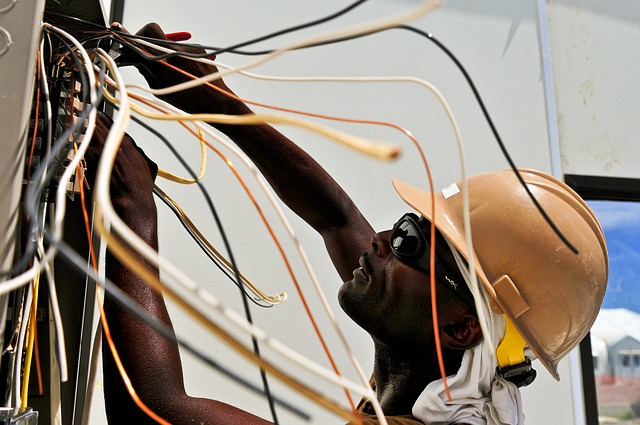Professional BRE Electrical Melbourne Services for Your Electrical Projects
The Ultimate Overview to Electric Setup: Tips and Techniques for a Safe and Reliable Home Wiring System
In the realm of home maintenance, couple of elements are as vital yet commonly ignored as the electric circuitry system. By exploring the subtleties of electrical security procedures and energy-saving methods, this comprehensive guide will lose light on the ins and outs of home wiring, equipping individuals to take cost of their household's electrical framework.
Comprehending Electrical Precaution
To ensure the safety and security of both people and building, understanding and carrying out appropriate electric safety actions is vital in any home wiring task. It is vital to conduct an extensive evaluation of the electric system before beginning any kind of circuitry task to recognize prospective threats or concerns that need to be attended to.
Moreover, using the ideal tools and tools is essential for keeping security during electric setups. Insulated handwear covers, voltage testers, and safety eyeglasses are a few of the standard security equipment that should be put on to stop electric shocks or accidents. It is also crucial to de-energize circuits before servicing them and to classify all circuits and breakers clearly to prevent confusion.

Necessary Tools for Home Wiring
Guaranteeing the correct execution of electric precaution in home electrical wiring projects entails utilizing a certain collection of crucial tools created to help with the installment process efficiently and securely. Some of the key tools needed for home wiring projects consist of a voltage tester for checking live wires, cable pole dancers for removing insulation from cords, a cable cutter for exactly reducing wires to length, a screwdriver established for safeguarding electric elements, electric tape for insulation and securing links, a cord ripper for removing wire sheathing, and a multimeter for determining voltage, present, and resistance. Furthermore, a drill with bits is vital for producing holes for circuitry and installing electric boxes, while fish tapes or rods help in drawing wires through channels or wall surfaces. It is crucial to buy high-quality devices to ensure accuracy, effectiveness, and security throughout home circuitry jobs. By having the needed tools conveniently offered, home owners can properly navigate the installment procedure and maintain a secure electrical system within their homes - BRE Automation Australia.
Step-by-Step Electric Setup Guide
Beginning an electric installation project calls for careful planning and adherence to safety standards. Prior to beginning any kind of job, ensure you have a comprehensive plan laying out the design of the electrical system, consisting of the positioning of outlets, buttons, and components. Think about the power needs of each gadget to identify the appropriate cord gauge and circuit breaker dimensions.
The very first step in the installment process is to turn off the power supply to the location where you will be functioning. Utilize a voltage tester to confirm that the circuits are de-energized before touching any cords. Next, meticulously eliminate existing components or outlets and separate the cables.
When setting up brand-new wiring, run cords through walls and ceilings, safeguarding them in place with proper installations. Follow regional building ordinance and supplier instructions for appropriate cord installment and connections. BRE Electrical Solutions. Make certain to label cables for simple recognition and future upkeep

Troubleshooting Common Circuitry Issues
Having actually completed the setup process as outlined in the previous subtopic, repairing usual electrical wiring issues is a vital skill for ensuring the safety and security and performance of your electrical system. One usual problem is a tripped breaker, commonly triggered by overloaded circuits or a short circuit. To repair this, find the breaker panel, identify the stumbled breaker by searching for the one not totally in the "on" setting, and reset it by flipping it totally to "off" and then back to "on." An additional common problem is a malfunctioning outlet, identified by no power or periodic power supply. Make certain the outlet is not regulated by a switch, after that utilize a voltage tester to look for power. If there is no power, turn off the circuit, evaluate the electrical wiring links for any type of loosened or damaged cables, and replace the outlet if essential. Constantly flickering lights can show loose electrical wiring connections or an overloaded circuit. To address this, check and tighten up all wire links in the influenced fixtures and buttons and redistribute the tons on the circuit to stabilize the electrical demand. Regularly examining and without delay dealing with these usual wiring problems will certainly maintain the security and performance of your home electric system.
Tips for Energy-saving Electric Solutions
For ideal energy effectiveness in electric systems, executing wise practices and using energy-saving modern technologies is critical. One crucial tip for accomplishing an energy-efficient electric system is to upgrade to LED lighting. Appropriate insulation and sealing of windows, doors, and electric outlets can additionally avoid power loss, inevitably decreasing the work on electric systems.
Conclusion
To conclude, carrying out correct precaution, making use of important tools, complying with a detailed installation guide, troubleshooting typical problems, and including energy-efficient pointers are essential for a risk-free and effective home electrical wiring system. By sticking to these techniques, homeowners can ensure the longevity and performance of their electrical setups. It is crucial to focus on safety and security and performance when it involves electric job in order to stop possible threats and to keep a dependable electrical system in the home.